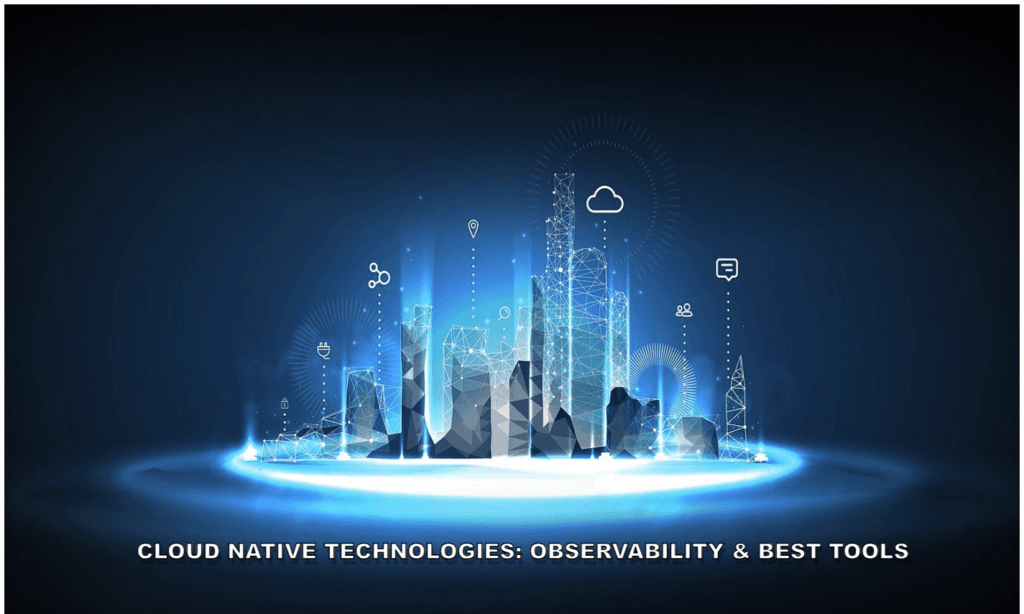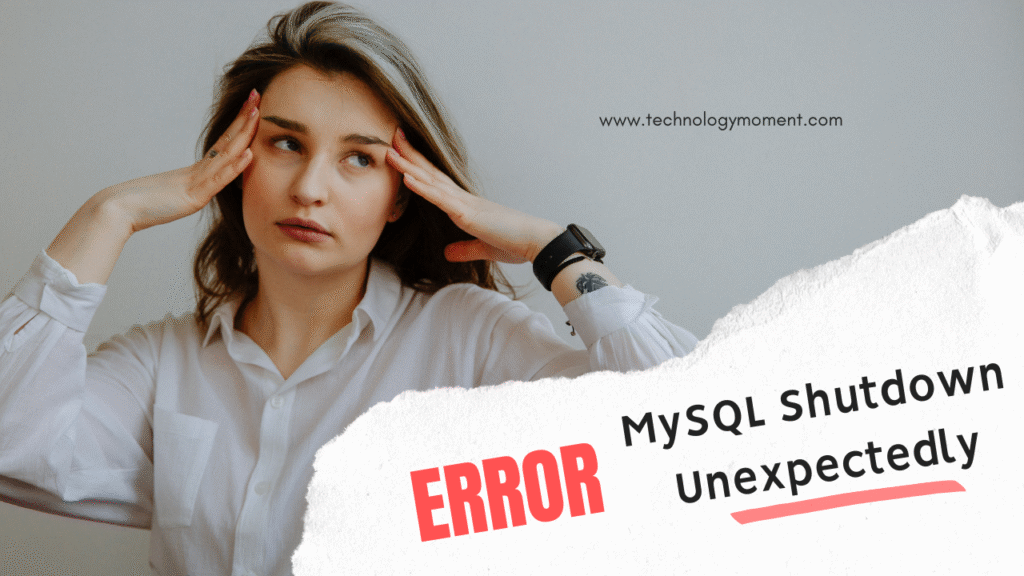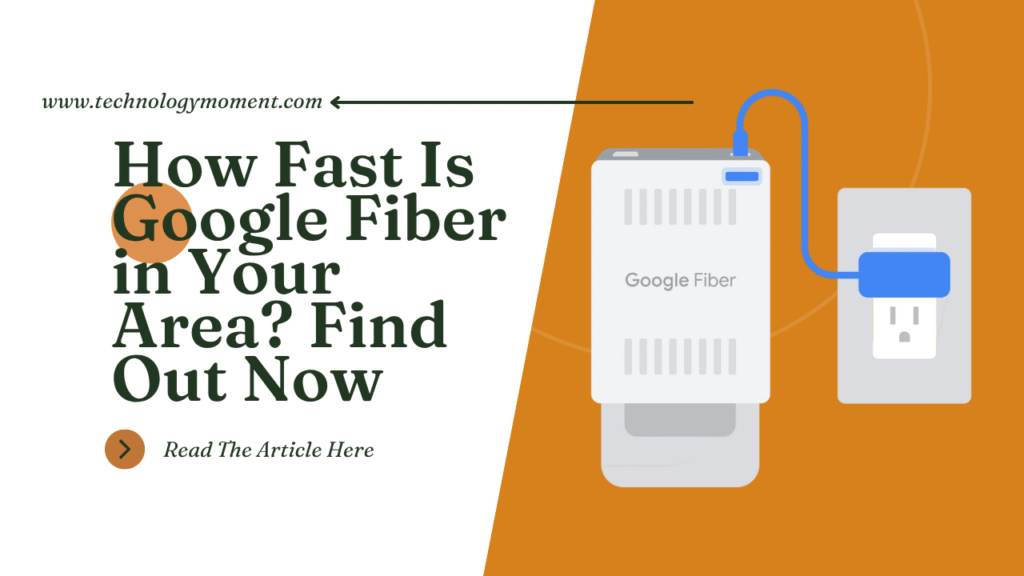At Technology Moment, we dive deep into the innovations shaping the digital world—bringing you insights that matter, without the fluff. Today, we’re unpacking a crucial topic that sits at the heart of modern software architecture: Cloud Native Technologies and the growing importance of Observability.
As businesses embrace cloud native principles to build scalable, resilient applications, one challenge rises to the surface—understanding what’s happening under the hood in real time. That’s where observability steps in, acting as your compass in a world of microservices, containers, and distributed systems.
In this blog, we’ll break down the core concepts of observability, explain why it’s essential in a cloud native environment, and showcase the best tools that can help you stay ahead of issues before they hit production. Whether you’re a developer, SRE, or tech decision-maker, this guide is packed with practical knowledge and tool recommendations to elevate your cloud strategy.
What Does “Cloud Native” Really Mean?
Cloud Native refers to a set of practices and technologies designed to help organizations build and run scalable applications in dynamic environments like public, private, and hybrid clouds. It’s not just about where apps run (i.e., in the cloud), but how they are architected and operated.
Cloud Native apps are built using:
- Microservices architecture: Instead of building one massive monolith, applications are broken down into smaller, independent services that can be deployed and scaled separately.
- Containers: These help package and isolate services, ensuring they run reliably across different computing environments.
- Dynamic orchestration: Tools like Kubernetes manage and automate deployment, scaling, and operations of application containers.
- DevOps and CI/CD practices: Cloud Native emphasizes speed, automation, and continuous delivery to streamline updates and reduce downtime.
In short, being “cloud native” is about embracing change—fast development, quick iterations, and adaptive systems that thrive in the complex, ever-evolving world of modern software.
How Software Development Is Trending Towards Cloud native Technologies
Why is everyone shifting to Cloud Native? Because it’s built for the modern era. It enables:
- Scalability on demand: No more guessing infrastructure needs—you scale when and where you need to.
- Resilience: Cloud Native apps are designed to self-heal and recover from failures with minimal downtime.
- Faster innovation: Developers can push new features quickly, gather feedback, and iterate fast.
- Cost efficiency: Resources are used more efficiently through automation and dynamic provisioning.
With customer expectations higher than ever, cloud native empowers organizations to keep up and stand out.
Table of Contents
What Is Observability?
Observability is your window into the internal state of a system based solely on its outputs—think logs, metrics, and traces. It answers questions like:
- What is happening in my application right now?
- Why did something break?
- How can I fix it before users notice?
It’s not about simply collecting data—it’s about making sense of that data in real-time to drive action.
Observability vs. Monitoring: What’s the Difference?
Let’s clear this up because they’re often confused.
- Monitoring is predefined. You set up dashboards and alerts for known issues—like CPU usage spikes or service outages.
- Observability is dynamic. It gives you the ability to dig into unknown unknowns—issues you didn’t anticipate or explicitly configure for.
A good analogy:
- Monitoring is your car’s dashboard telling you your engine light is on.
- Observability is the mechanic who can diagnose what’s actually going wrong under the hood—without having to take the whole engine apart.
The Three Pillars of Observability
- Logs – These are timestamped records of events. Think of logs as a timeline of what happened and when.
- Metrics – Numerical data over time (e.g., CPU usage, memory consumption, request count). These help you quantify system behavior.
- Traces – These track the flow of requests through various services.
A well-observable system uses all three together to tell a complete story.
Why Traditional Monitoring Falls Short
Traditional monitoring was built for monolithic apps—not the dynamic, distributed world of cloud native. It’s hardwired to track static infrastructure and predict known issues. But in the cloud native world:
- Services scale up and down dynamically
- Infrastructure changes constantly
- Failures happen in unpredictable ways
Observability is essential to make sense of this complexity and react in real-time.
Importance of Observability in Cloud Native Environments

Handling Microservices Complexity
In a monolith, all your code lives in one place. But cloud native breaks it into dozens or even hundreds of services. This makes systems more scalable—but also more complex.
Without observability:
- You’ll struggle to understand how services interact
- Debugging becomes a nightmare
- Latency or failure in one service can ripple across others unnoticed
Observability shines a light through the fog, giving you a clear view of how everything connects.
Enabling Faster Incident Response
Let’s be real—incidents will happen. What matters is how fast you can detect, understand, and resolve them.
With strong observability:
- Alerts are tied to actual user-facing issues
- You can trace problems directly to their root cause
- Teams respond faster and smarter, reducing Mean Time to Recovery (MTTR)
This leads to better uptime and happier users.
Empowering DevOps and SRE Teams
Observability isn’t just a tool—it’s a superpower for DevOps and SRE (Site Reliability Engineering) teams. It helps them:
- Proactively prevent incidents
- Monitor service-level objectives (SLOs)
- Automate intelligent alerting and remediation
- Collaborate across teams with shared data and context
By embedding observability into their workflows, these teams can work more efficiently and ship with confidence.
Challenges in Achieving Observability
While observability sounds like a dream for DevOps teams, achieving it in a cloud native environment comes with its fair share of hurdles. Let’s break them down:
1. Distributed Systems and Data Silos
In cloud native architectures, applications are broken into microservices that communicate over networks. Each service might be running in its own container, on its own node, or even in different geographic locations. That’s a lot of moving parts.
The result? Data silos. Logs, metrics, and traces often live in separate tools or locations. Correlating them becomes a challenge, especially when incidents occur. Without unified observability, you’re stuck piecing together a puzzle in the middle of a crisis.
2. High Cardinality and Performance Overhead
Modern apps generate a massive amount of telemetry data—especially metrics with high cardinality, like the number of unique user sessions or API calls per customer per region. This makes it expensive and sometimes slow to process or query the data.
And let’s not forget the performance trade-off. Too much instrumentation can bog down your app if not done right. You want rich insights, but not at the cost of app speed or user experience.
3. Tool Sprawl and Integration Issues
There’s no shortage of observability tools on the market. But more tools often mean more headaches. Each tool might have its own format, dashboard, and query language. Getting them all to play nicely together—and work within your CI/CD flow—can feel like herding cats.
Worse still? Vendor lock-in. You might start with one solution and realize later it doesn’t scale or lacks critical features. By then, migrating becomes a painful and expensive process.
Best Practices for Cloud Native Observability
Good observability doesn’t happen by accident—it’s intentional. Here are some golden rules to follow:
1. Instrument Early, Instrument Often
Don’t wait until something breaks to start thinking about observability. Embed telemetry from the very beginning of development. That means adding tracing, metrics, and logging into your code as part of your build process.
The earlier you start, the more visibility you’ll have later when things scale or get complex.
2. Standardize Your Telemetry Data
If every service logs data in a different way or uses different labels for metrics, things get messy—fast. Use open standards like OpenTelemetry to ensure consistency across your stack. This also makes switching tools easier if needed.
Standardization also means setting naming conventions, tagging structures, and log formats across teams.
3. Implement Alerting with Context
Alerts are only helpful if they tell you something useful. Don’t just alert when CPU spikes—alert when a customer-facing feature is impacted. Include contextual data in alerts, like what changed recently (code deploys, config updates), related traces, or logs.
This way, your team can act fast and reduce mean time to resolution (MTTR).
4. Build a Culture of Observability
Observability isn’t just for SREs or DevOps engineers. Developers should be invested too. Make it part of your team culture to prioritize visibility and debugging. Regularly review dashboards, track service health, and learn from past incidents.
Encourage teams to ask questions like:
- “Can I trace this request from start to finish?”
- “What signals would help debug this faster?”
Best Tools for Cloud Native Observability
Let’s talk tech. These tools are top-tier when it comes to observability in cloud native setups. You don’t need to use them all—but knowing what each offers can help you build the right stack.
1. Prometheus
An open-source metrics collection and alerting toolkit. It excels at scraping time-series data and is Kubernetes-native. PromQL (Prometheus Query Language) is powerful but can be a bit of a learning curve.
2. Grafana
The go-to tool for dashboards. Grafana integrates beautifully with Prometheus, Loki, and others. It helps you visualize metrics and logs in real time with stunning, interactive charts.
3. Jaeger
An open-source distributed tracing system. Originally developed by Uber, Jaeger helps trace request flows across microservices, making it easier to find bottlenecks and latency issues.
4. OpenTelemetry
It’s an open-source project that provides vendor-neutral APIs and libraries for collecting logs, metrics, and traces. Perfect for avoiding vendor lock-in and standardizing telemetry.
5. Loki
Built by the Grafana team, Loki is a log aggregation system that works like Prometheus—but for logs. It’s lightweight, Kubernetes-friendly, and integrates seamlessly with Grafana dashboards.
6. Datadog
A commercial, full-stack observability platform. It offers everything from infrastructure monitoring to APM (Application Performance Monitoring), logs, dashboards, and more—all in one place. Great UX but comes with a cost.
7. New Relic
Another robust commercial solution offering real-time insights into application performance. It supports a wide range of integrations and is known for its ease of use and powerful dashboarding capabilities.
8. Honeycomb
Focused on high-cardinality data and debugging complex systems. Honeycomb allows you to ask ad-hoc questions about your data without needing to pre-define metrics—perfect for exploratory troubleshooting.
Integrating Observability into CI/CD Pipelines
Shift-Left Observability
The term “shift-left” means catching problems as early in the development process as possible—ideally before they even reach production. When it comes to observability, this means embedding telemetry, logging, and tracing right from the development and testing phases.
By integrating observability into CI/CD pipelines:
- Developers can catch issues during unit or integration testing, not just when apps are live.
- You can ensure telemetry data is present and correct before code gets deployed.
- Teams get faster feedback loops, allowing for quick rollbacks or fixes.
It’s like setting up a security camera system before you move into a new house—you’re prepared from day one.
Observability in Automated Testing
Modern CI/CD relies on automated testing to push code quickly and safely. Here’s where observability can be a game changer:
- Test failures can be enriched with logs and traces, giving instant context to the problem.
- You can track performance metrics during builds and flag regressions automatically.
- Observability data from test environments helps simulate real-world conditions, improving test reliability.
Real-World Use Cases and Examples
Netflix and Their Observability Stack
Netflix is a poster child for cloud native success—and observability is baked into their DNA.
They use a custom observability platform built on open-source and in-house tools like:
- Atlas for metrics,
- Spinnaker for deployment visibility,
- Chaos Monkey to test system resilience.
Their goal? Fail fast, recover faster. Observability lets them understand user impact, debug instantly, and ensure uninterrupted binge-watching for millions.
How Uber Leverages Distributed Tracing
Uber runs thousands of microservices. To trace a single user request, they rely heavily on Jaeger, a distributed tracing system.
They use it to:
- Identify latency bottlenecks in ride-matching or fare calculation,
- Understand dependencies between services,
- Debug complex flows in real time—like when a ride booking fails or gets delayed.
By correlating traces, logs, and metrics, Uber’s engineers can act like detectives, solving system mysteries with speed and precision.
The Future of Observability in Cloud Native
AI and ML in Observability
As cloud environments grow more complex, traditional dashboards won’t cut it.
Modern observability tools are starting to:
- Auto-detect anomalies in real time,
- Predict system failures before they happen,
- Suggest resolutions using historical data.
Imagine your observability system being less like a rearview mirror and more like a smart assistant, warning you of trouble ahead and recommending the best route.
eBPF and Next-Gen Instrumentation
Another exciting trend? eBPF (extended Berkeley Packet Filter). It’s a powerful Linux kernel technology that lets you observe what’s happening deep inside your system—without changing your code.
Benefits of eBPF in observability:
- Low overhead, high performance,
- Security insights, network visibility, and application tracing all in one,
- Real-time, system-wide visibility without instrumentation overhead.
It’s like having X-ray vision for your infrastructure.
Conclusion
In today’s fast-paced cloud-native world, observability isn’t optional—it’s essential. As applications become increasingly complex, with hundreds of microservices interacting across containers and clusters, the need for clear insight into what’s happening under the hood has never been more important.
We’ve explored what observability means, why it goes far beyond simple monitoring, and how it empowers teams to detect, understand, and resolve issues faster. The right observability tools can help teams stay ahead of problems, improve performance, and deliver a seamless experience for users.
The best practices—like early instrumentation, standardized telemetry, and building a culture of observability—are no longer “nice-to-haves.” They’re fundamental for success in cloud-native ecosystems. Meanwhile, tools like Prometheus, Grafana, OpenTelemetry, Datadog, and Jaeger offer everything you need to build powerful observability pipelines that scale.
So, if you’re building for the cloud, observability is your map, compass, and flashlight—don’t leave home without it.
FAQs
What are the 3 pillars of observability?
The three pillars are:
- Logs – Text-based records of events that occurred at specific times.
- Metrics – Numeric measurements that show system health over time (like CPU usage).
- Traces – A record of the journey a request takes through your system, helpful in understanding performance bottlenecks or failures.
Together, they provide a complete view of your system’s behavior.
How is observability different from logging?
Logging is just one part of observability. Logs record specific events, but observability is a holistic approach that combines logs with metrics and traces to give a full understanding of system health and behavior. You can think of logging as “looking back,” while observability is about “looking in real-time and forward.”
Is Prometheus better than Datadog?
It depends on your needs:
- Prometheus is open-source, great for metrics, highly customizable, and works well with Kubernetes.
- Datadog is a commercial solution that provides an all-in-one observability suite (metrics, logs, traces, dashboards, alerts) with excellent UI and integrations.
If you’re looking for cost-effective and customizable, Prometheus is ideal. For plug-and-play ease and enterprise-level features, Datadog shines.
What is OpenTelemetry and why should I use it?
OpenTelemetry is an open-source project that provides standardized APIs, SDKs, and instrumentation for collecting telemetry data (logs, metrics, traces). It’s becoming the industry standard for observability because:
- It supports multiple languages and platforms.
- It integrates easily with most observability tools.
- It reduces vendor lock-in.
In short, it makes your observability future-proof and flexible.
How do I start implementing observability in my cloud native app?
Here’s a simple roadmap:
- Start with metrics – Use Prometheus or Datadog to gather basic metrics.
- Add logging – Centralize logs using Loki, ELK Stack, or Datadog Logs.
- Implement tracing – Use Jaeger or OpenTelemetry for distributed tracing.
- Create dashboards and alerts – Use Grafana or Datadog for visual insights and notifications.
- Continuously refine – Instrument more services, standardize data, and analyze trends.
Remember: Start small, iterate fast, and always ask, “Can I understand this system from the outside?”













